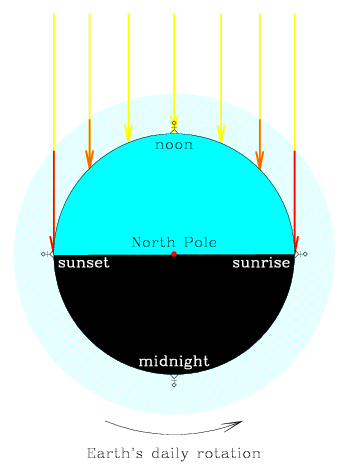

Blue light (left) is short wavelength, high frequency (high energy) radiation. Red light (right) is long wavelength, low frequency (low energy) radiation.
 |
 |
| [NMSU, N. Vogt] | |
Our atmosphere is made up of small particles. These particles preferentially interact with and scatter short wavelength (blue) light. The scattered light bounces off in all directions, while the long wavelength (red) light is unaffected and passes through the atmosphere along a relatively straight path. When the Sun or the Moon is directly overhead, at noon or at midnight, the light passes through a relatively short amount of the atmosphere before reaching us. When the Sun or the Moon is on the horizon (at sunrise or sunset), however, the light passes through a longer section of the atmosphere before reaching us. The blue light is preferentially scattered away from the direct path, and so less of it survives for us to see coming directly from the source.
 | |
| [NMSU, N. Vogt] | |